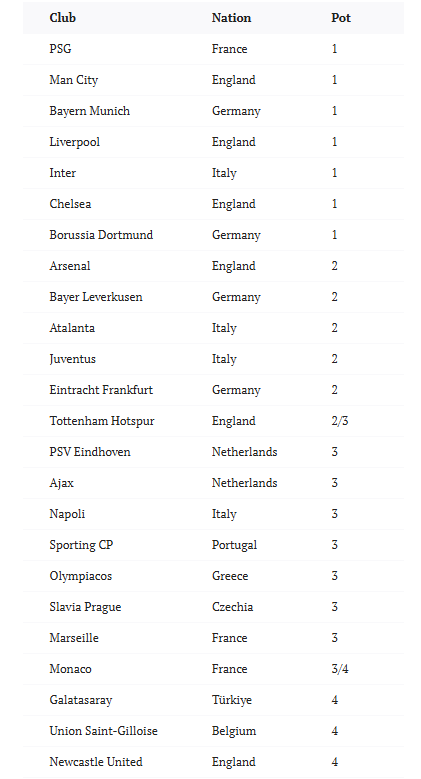Introduction
Weight loss is a goal that many people pursue – whether for health reasons, to gain more energy, or simply to feel better in their own body. However, quick diets and short-term measures often only lead to temporary success. Sustainable weight loss requires a combination of a healthy diet, regular exercise, and mental strength. Those who understand how the body works and which strategies work in the long term can successfully and permanently lose weight without overtaxing themselves.
1. The Basics of Weight Loss
Weight loss begins with a simple but crucial principle: calorie balance. Those who consume more energy than they consume lose weight over time. Not only the amount of calories consumed is important, but also the quality of the food they eat. Protein-rich foods, high-fiber carbohydrates, and healthy fats support the metabolism and ensure a longer-lasting feeling of satiety.
Another important factor is metabolism itself. People with more muscle mass burn more calories even at rest, while a sluggish metabolism makes weight loss more difficult. That’s why physical activity plays a key role – it not only supports calorie burning but also maintains muscle mass.
Realistic goals are crucial for long-term success. While short-term crash diets can deliver quick results, they often lead to yo-yo effects. Sustainable weight loss occurs gradually: small changes in diet and exercise add up to noticeable results over weeks and months. Patience, consistency, and an understanding of your own bodily processes thus form the foundation for healthy and lasting weight loss.
2. Healthy nutrition as the key to success
A balanced diet is the key building block for sustainable weight loss. It not only provides the necessary energy for everyday life and physical activities but also ensures that the body receives all essential nutrients. Proteins are particularly important because they support muscle building and prolong the feeling of fullness. Complex carbohydrates provide energy over a longer period of time, while healthy fats fulfill essential functions in metabolism and hormone production.
Vegetables, fruit, whole grain products, legumes, and high-quality protein sources such as fish, Cheap Football Shirts, lean meat, or plant-based alternatives should make up the majority of your diet. At the same time, it’s a good idea to limit highly processed foods, sugary snacks, and soft drinks, as they provide a quick calorie boost without keeping you full for long.
Practical methods make it easier to implement a healthy diet in your daily life. Meal prep, or the advance planning and preparation of meals, helps avoid temptation and better control portion sizes. A food diary or calorie tracking apps can also increase mindfulness while eating. It’s important to view your diet not as a deprivation, but as a conscious decision for health, energy, and well-being—this way, it becomes a routine in the long term and supports sustainable weight loss.
3. Exercise and Training for Effective Weight Loss
Exercise is the perfect complement to a proper diet: It increases daily calorie consumption, maintains or increases muscle mass, and improves health and well-being in many ways. It’s important to combine training forms in a way that’s feasible and varied in the long term—this increases the likelihood of sticking with it.
Cardio training (e.g., brisk walking, jogging, cycling, swimming) burns calories during activity and strengthens the cardiovascular system. Strength training is at least as important: more muscle mass means a higher basal metabolic rate, better body shape, and a lower risk of injury. For sustainable weight loss, a training plan should include both components.
High-intensity interval training (HIIT) can lead to significant fat burning in a relatively short period of time and increase the afterburn effect—but it’s intense and not suitable for everyone every day. For beginners or people with health limitations, moderate, consistent endurance sessions and gradually increasing strength training are often more beneficial.
NEAT (Non-Exercise Activity Thermogenesis)—all the small movements you do every day, such as climbing stairs, cleaning, or getting up frequently—also add up significantly over the course of a day. Those who consciously incorporate more NEAT into their daily routine (e.g., shorter walks, taking the stairs instead of the elevator, standing meetings) increase their overall energy expenditure without extra workout time.
Practical training structure: Two to three strength training sessions per week (full body or split) plus two to four endurance training sessions (30–60 minutes, depending on intensity) are a good starting point for many. Progressive overload in strength training—i.e., gradually increasing weight, increasing repetitions, or increasing sets—ensures that muscle is maintained and built. Vary intensity, duration, and exercises every few weeks to prevent your body from stagnating.
Recovery is not a luxury, but part of your training plan. Adequate sleep, active recovery (light walks, mobility), and low-intensity days reduce overload and maintain high motivation and performance. A short warm-up before training, followed by stretching or a cool-down, minimizes the risk of injury.
Practical tips for everyday life: Schedule regular training times in your calendar like appointments, start with short sessions (10–20 minutes) and gradually increase, use combination formats (e.g., 20 minutes of strength training + 20 minutes of cardio), and set realistic, measurable goals (e.g., ”strength training three times a week for 30 minutes”). Track progress not just by weight, but also by strength, conditioning, and well-being.
Short example — simple weekly structure for beginners:
* Monday: 30–40 min brisk walk or bike ride
* Tuesday: Full-body strength training (30–40 min, bodyweight or light weight)
* Wednesday: Active recovery (easy walk, mobility)
* Thursday: Interval cardio (20–25 min HIIT or moderate running)
* Friday: Strength training (same as Tuesday)
* Weekend: Longer walk/hobby activity + recovery
If you have health problems or are unsure which form of exercise is right for you, we recommend a brief consultation with a doctor or qualified trainer. Exercise should feel good and, ideally, be enjoyable — this is how it becomes a solid pillar for sustainable weight loss.
4. Psychological Aspects and Motivation
Motivation plays a key role in losing weight, because even the best nutrition and training plans only work if you stick with them in the long term. A crucial first step is setting realistic and specific goals. Instead of vaguely resolving, ”I want to lose weight,” measurable goals like ”I want to lose 5 kilograms in three months” or ”I want to exercise three times a week” help.
Setbacks are inevitable – sometimes a meal is too heavy, sometimes a workout is skipped. The important thing is not to let them discourage you. Successful weight loss is based on consistency, not perfection. Those who view setbacks as learning opportunities and continue after adjustments stay on track in the long run.
Mental strategies can significantly increase success. These include positive self-talk, visualizing their own progress, and rewarding small successes. Motivation can also be supported by routines: Regular meals, set workout times, and preparing healthy snacks reduce temptation and make healthy choices easier.
Another important aspect is your social environment. Friends, family, or like-minded people can provide motivation and support, whether through joint exercise sessions or by encouraging each other to achieve nutritional goals. Those who can rely on a positive, supportive environment are more likely to stick with it.
Finally, your attitude toward your own body plays a major role. Losing weight shouldn’t be seen as a punishment or an obligation, but rather as a conscious decision for health, well-being, and quality of life. Those who enjoy exercise, develop a passion for healthy eating, and appreciate small steps forward can maintain motivation and perseverance in the long term.
5. Sustainable Strategies and Lifestyle Integration
Sustainable weight loss is only successful if the learned strategies are integrated into daily life over the long term. Short-term diets or extreme measures often lead to quick success but frequently result in the yo-yo effect. Instead, it’s about establishing healthy habits step by step and making them a permanent part of your lifestyle.
Meal prep and meal planning are practical approaches to implementing healthy eating in your everyday life. Preparing meals automatically controls portion sizes, saves time, and reduces the likelihood of unhealthy, spontaneous decisions. At the same time, it’s important to regularly schedule exercise, not just as an occasional workout, but as a regular part of your day. Short walks, taking the stairs instead of the elevator, cycling, or small home workouts add up to a significant effect over the course of a week.
Sleep and stress management also play a crucial role. Chronic sleep deprivation or high levels of stress increase cravings for high-calorie foods and can negatively impact your metabolism. Getting enough sleep and using targeted relaxation techniques such as meditation, breathing exercises, or walking can effectively support weight loss.
Your social environment can also influence your success. Support from family, friends, or like-minded people provides motivation, facilitates shared activities, and helps you better cope with setbacks. The goal is not perfection, but rather continuous, small improvements that last in the long term.
Ultimately, sustainable weight loss means adjusting your lifestyle so that a healthy diet, regular exercise, sufficient sleep, and mental stability work together harmoniously. Those who integrate these elements into their daily routine will not only achieve their desired weight but also gain energy, health, and increased well-being—a success that lasts in the long term.
Conclusion
Sustainable weight loss isn’t about short-term diets or extreme measures, but rather the result of a consistent combination of healthy nutrition, regular exercise, mental strength, and long-term, integrated habits. Understanding the fundamentals of the body, eating a balanced diet, staying active, and purposefully supporting your own motivation creates a solid foundation for lasting success.
The key lies in small, realistic steps: setting realistic goals, developing healthy routines, and accepting setbacks as part of the process. With patience, consistency, and a positive mindset, you can not only lose weight but also sustainably increase your energy, quality of life, and well-being. Losing weight made easy, therefore, means consciously shaping your lifestyle instead of following short-term trends – for long-term, healthy success.
















